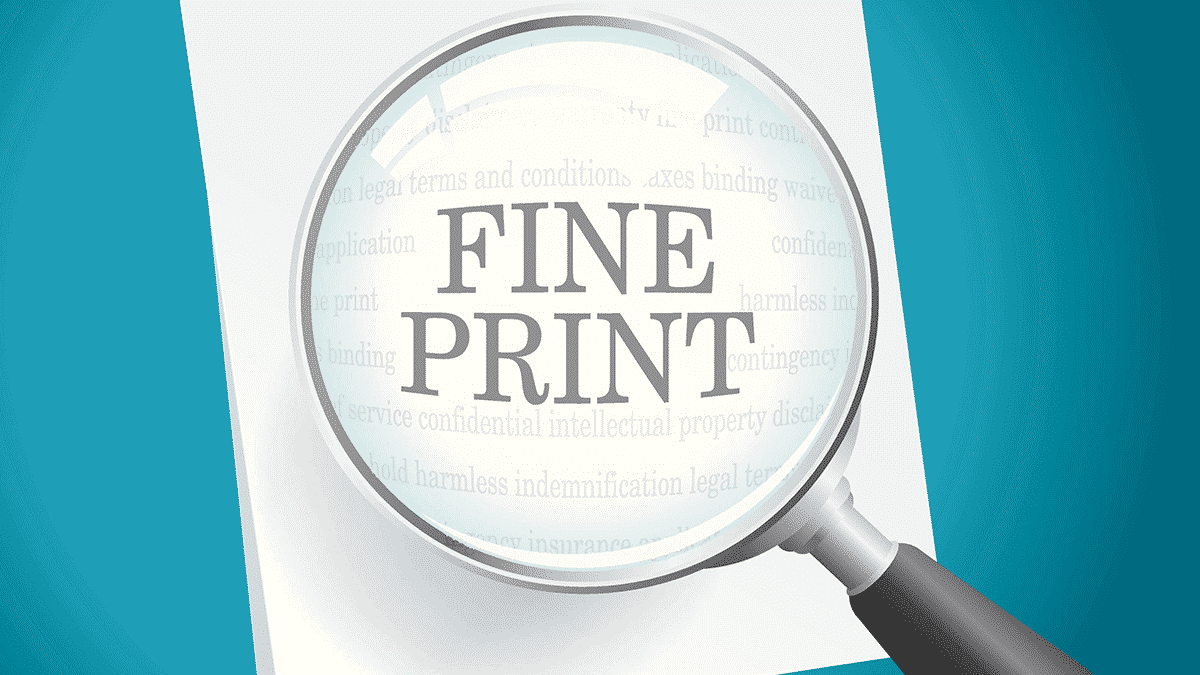The ATO YourSuper comparison tool was launched as part of the Your Future Your Super reform that introduced annual performance testing of super products. When a product fails the test, its trustee must write to members to inform them of the failure and suggest they use the tool to search for an alternative fund.
Despite the extension of the performance test to choice products in 2023, the comparison tool still lists only MySuper options. Along with this limitation, other pitfalls are that a comparison of investment return is displayed without acknowledgment of the differences in asset allocation (and risk) between products and fees are displayed only as a total figure, with no explanation of indirect fees versus fees deducted from your balance.
Our video review demonstrates how to use the comparison tool while keeping these issues in mind to shortlist products you may wish to consider.
To find out how to make a more comprehensive super fund comparison, including selecting a non-MySuper option, see our sections on comparing super funds, choosing an investment option, and your risk profile.
Transcript
Hi, I’m Kate from SuperGuide. Welcome to our review of the Your Super comparison tool. This tool certainly can be of use if you’re wanting to compare superannuation funds, but it does have some limitations.
The first of those is that it only compares my super options. If you’re wanting to make an active choice of investments, those Choice options do not appear here. Secondly, it doesn’t acknowledge differences in the asset allocation of the products that it’s showing you. So you need to make yourself aware separately of how the products are invested to make sure that you’re making a fair comparison. Lastly, there is some difficulty with how the fees are disclosed in the tool. It’s certainly very helpful to disclose fees and important that you consider those in a comparison. But the tool doesn’t differentiate between fees that are deducted directly out of your account versus fees that come out before the investment return is calculated, and that can be critical. Let’s look at those aspects.
The first thing that you’ll see when visit the tool, is this button that invites you to log in with MyGov. You can certainly do that if you would like to. And if you do, what it does is it pulls through your most recent superannuation balance that’s available to the ATO, usually your 30 June balance, and also the name of your super fund or funds if you have more than one. If you already know your super information, you don’t need to log in, the tool will still function perfectly.
Let’s continue down, and I’ll show you how to tailor the tool if you haven’t logged in with MyGov. What you need to do is click this Filter button, and you can then put in your personal details.
Let’s start with someone who’s aged 25 and has only $5,000 in their super. Then we can see you can choose in this investment performance menu, whether you want to compare all funds, only performing funds, only underperforming funds. I’m not sure why you would want to do that, or only funds that have not been assessed. What this is referring to is the APRA performance test, which is performed annually. A fund will be found to be underperforming if its actual return is half a % or more below the benchmark that APRA calculate.
If it’s showing as not assessed, that means that the product hasn’t existed for long enough for APRA to apply the performance test. This year, a product has to have been available for six years at least to have a six-year performance history for APRA to apply the test to. If it’s newer than that, it will show as not assessed.
We’ll just choose all, so we see all the different options. Lastly here, you can exclude restricted funds. I will do that. What a restricted fund is, is one that’s not available to the wider general public. So for example, Qantas superannuation is a restricted fund. It’s only available to people who work for Qantas and perhaps their spouses. Then we can view the results.
So you can see the tool generates a simple ranking table. And by default, it ranks from lowest fee to highest fee. Now, while fees are certainly a very important consideration when choosing a fund, they’re not the only thing to take into account. And what could be even more important is the investment return. So what I’ll do is actually select here the investment return, and instead, the tool will re-rank everything from highest performance to lowest. That might be more informative when making a decision. It does still display the fees, so you can still consider those in your comparison. We can see now that the table looks quite different. The funds that are at the top are not the same ones that appear if you’re ranking from lowest fee to highest fee.
What you can then do, if you would like to make a more detailed comparison, is select the options that you would like to shortlist. You can choose up to four. I’ll just choose the top four. You can see once I’ve done that, I don’t have the option to select anymore. It’s a maximum of four. Then we can click this compare button again and see our shortlist data. This gives more information about the funds that we’ve put on the shortlist. You can see here that they’re all listed as performing, and it’s showing us now not only the eight-year return, but also five-year and three-year return. So you’re getting some more information. It also lets you know whether the option is a single diversified strategy or a lifecycle strategy. The difference here is very important.
A lifecycle strategy means that when you’re very young, the asset allocation of the option will be quite aggressive. It’s targeting high returns because generally when you’re younger, you can afford to take the risk that comes along with chasing those higher returns. You have plenty of years for your balance to recover if you make a short-term loss before you’ll be reaching your retirement age.
A lifecycle option will start out with most of its assets in growth assets, which would be shares, property, derivatives, and other alternatives, and only a small amount in more stable assets. As you age, a lifecycle strategy would automatically become more conservative. As you approach retirement, there’s less risk of making a short-term loss, but also your long-term returns closer to retirement would be expected to be lower because the asset allocation will be more focused into stable assets like cash and bonds, which do tend to offer stability but don’t have those high long term returns offered by growth assets.
So if you’re after an option that’s very much a set and forget that will change for you as you age and you don’t want to make active investments, management decisions, a lifecycle option might be a way to go. In contrast, the single diversified option doesn’t change as you age. It’s a set asset allocation which will be disclosed in the fund’s product information, and that doesn’t change year by year. It always stays the same.
You can see for this young person, we’ve had two lifecycle options pop up as being top performers. That is to do with the fact that they will be more aggressive options. There is a natural relationship between investment risk and long-term return. The riskier assets do tend to have higher long-term returns. So these lifecycle options that are very aggressive when a person is young are going to appear towards the top of the list. For an older person, it’s very much the opposite, as we’ll see when I take you through the second example in a moment.
What you can also do from this page is select to see more product details. What this will do is take you through to the super funds MySuper dashboard, and that gives you quite a bit more information about the product. Let’s pick on the first one that appears here, Hostplus, and click through to their dashboard. Now, each one’s dashboard might look a little bit different, but it contains the same essential information. What it has is the return target of the fund, the actual investment return, and then a comparison between the return target and the actual return. So you can see if the fund is meeting its goals or not, and that can be very informative when making a decision.
Once you’re here on the fund’s website, you can also find more information. There’ll be lots of menus at the top where you can see more resources, learn more about their products, and read their product disclosure statement, which is very important if you’re considering joining.
Let’s go back, though, to the YourSuper comparison tool. We’ll go back to the beginning to show you an older member with a higher balance. Now, again, if we click in this filter, we can put in now someone who is 65 and has a much higher balance, say, $400,000. Again, we’ll exclude restricted funds and view our results. Again, it’s ranked from lowest fee to highest fee, but let’s change that to see the returns.
We’ve again got Hostplus and AustralianSuper at the top. The same as we did for a younger member, because they’re offering a single diversified strategy. Their investment return is the same no matter what your age is. So they’re both popping up at the top of the table. However, we can notice that Mine Super and Local Government Super have disappeared. They’re nowhere near the top of this table sorted by investment returns. That’s because of the age of the member that we’ve put in.
An older member, someone who’s 65 in a lifecycle option, is going to be geared towards much more conservative assets of cash, bonds, and other fixed interest securities. They’re not going to have as high of an investment return. That’s a real downside of this calculator, as I said at the beginning. It doesn’t acknowledge that there is any difference in the asset allocation of the options that it’s displaying. You might assume, if you didn’t know, that these other funds just have really bad investment performance, but that’s not really the case. They’re not aiming for the same thing. A single diversified strategy is not the same as a lifecycle option. It’s got a different aim.
If we go down, we actually need to visit page two to find Mine Super and Local Government Super that were the two we were comparing originally. Again, we can look at the more detailed comparison. You can see here their investment return is significantly lower than what was showing up before because this is an older member who’s in a much more conservative stage of their lifecycle approach.
What I’d also like to point out here is the fees. You can see that although Hostplus has the highest fee disclosed, it also has the highest eight-year return. You might look at this and think, Well, I don’t want to choose Hostplus because it’s got this very high fee and that’s going to put me off. But it’s very important that you investigate further to find out what that fee is actually made up of. If most of the fee is being deducted before the investment return is declared, then that’s not actually coming out of your balance. Yes, it’s affecting your investment return, but if they’re managing to achieve a very high return after fees, that might not be as important as it would be if a fund had a high fee and also wasn’t achieving a good long-term return.
To put that in context, this annual fee that looks very high, about $4,500, is really just over 1% of the account balance that we put in, $400,000. If we say that it’s 1%, which is rounding, but for the sake of example, I think we can let it pass. If that fee is 1%, then that means that Hostplus’s actual eight-year investment return was 8.92%. They then took 1% out for fees, and what you got credited to your account was 7.92%. What matters to you is that you still took away that high investment return.
It’s really just critical to educate yourself further when you are making a comparison by visiting the fund’s website, looking at their product disclosure statement, and finding out how those fees are really charged. Are they deducted from your balance? Or are they coming out before the investment return is calculated? How does that affect how you feel about which funds you’d like to choose?
Once you’ve done your detailed comparison, you might like to print your results, which you can do here by clicking the print-friendly version. There are also some links up here that you can click to get more information about what to consider if you intend to open a new account or to consolidate your super, because it is important to consider other things apart from fees and returns, like the insurance that would be available to you. I hope that’s helped you to understand how this YourSuper comparison tool works and to avoid making a mistake in interpreting your results.












Leave a comment
You must be a SuperGuide member and logged in to add a comment or question.